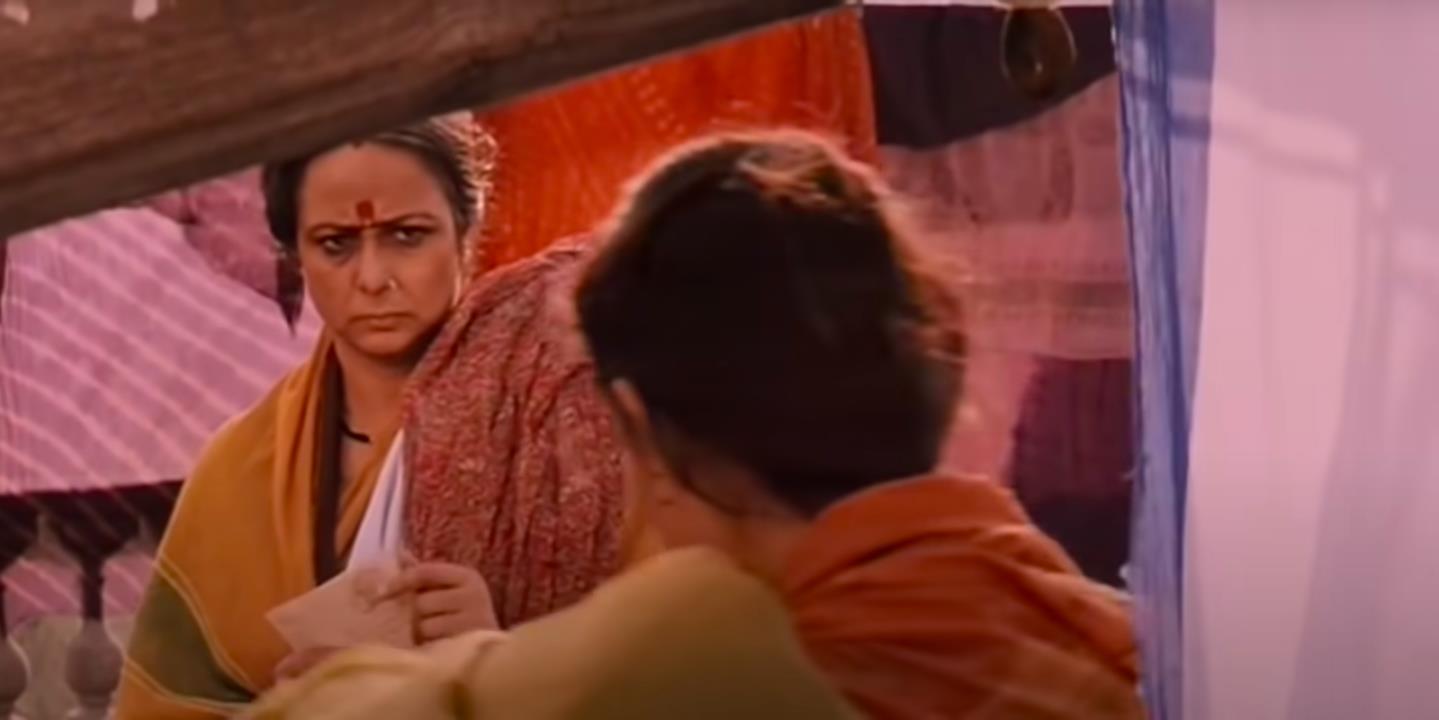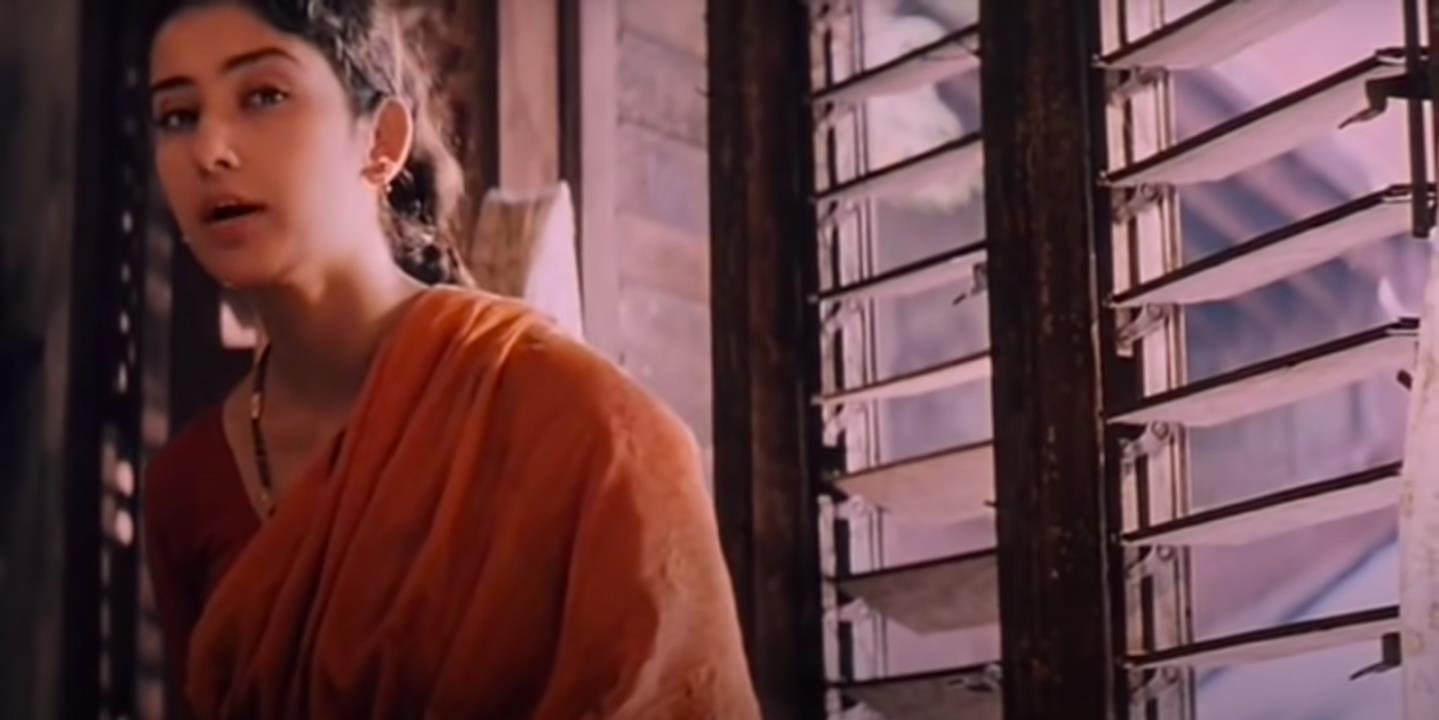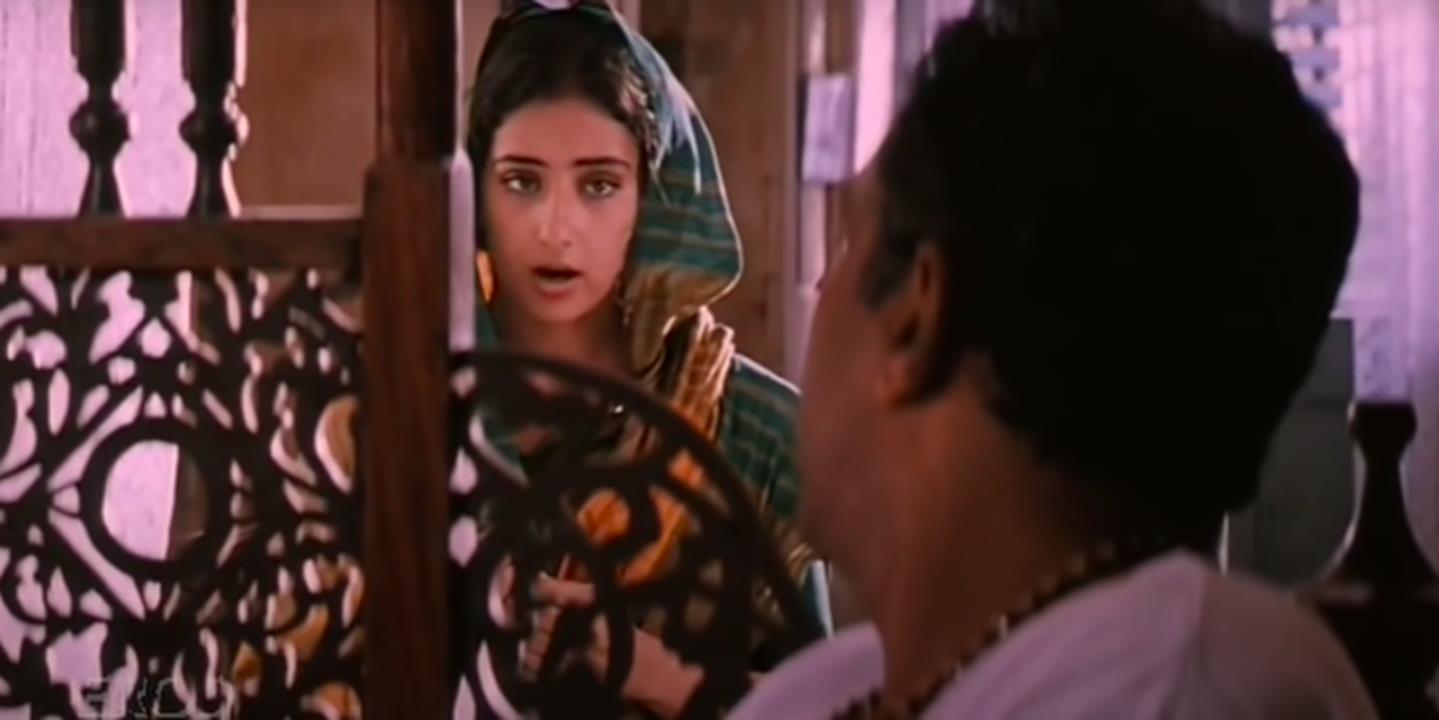Cinematic Apparatus as Altering Reality: Partition, Communalism and Gender in Bombay
Mani Ratnam's Bombay (1995) depicts the brimming communal tensions before and after the 1992 demolition of the Babri Masjid and the subsequent riots that engulfed the nation. The film opens with Shekhar Narayanan (Arvind Swamy), a journalist residing in Bombay, returning to his village in Tamil Nadu, where he meets and falls in love with Bashir Ahmad's daughter, Shaila Banu (Manisha Koirala).

The train has been a potent trope in Partition fiction in Indian cinema, which brings to the surface memories of communal violence. In the aftermath of the Bombay riots of 1992, the long-forgotten and often-repressed memories of Partition resurfaced with jolting reminders of a horrific, tragic past that is embedded within the writing and cinematic discourse of the last three decades.

Shekhar Narayanan arrives at his village in Tamil Nadu.
Ranjani Mazumdar, in her essay “Memory and History in the Politics of Adaptation: Revisiting the Partition of India in Tamas” writes, “Ashis Nandy argues that the journey of partition is a journey embedded in people’s consciousness as something inevitable to give birth to a new nation.” The train serves as a salient trope across films to address themes of partition or its memories. It symbolises this tumultuous period, as it was marked by displacement, upheaval, exile, violence, mass migration and a journey, to highlight the emotional and physical transition people had to endure. It is a recurring motif in films of Ritwik Ghatak and Satyajit Ray, TV series like Tamas (1988) and films such as Raj Kapoor’s Aag (1948), Manmohan Desai’s Chhalia (1960), M.S. Sathyu’s Garam Hava (1974) and Deepa Mehta’s 1947: Earth (1998) among others. The train here, apart from violence and the sight of mutilated bodies, also becomes a witness and microcosmic depiction of the outside world. In this manner, it makes the audience cognisant about other realities of loss, alienation and mourning for one’s homeland. Yet if in Ray’s Pather Panchali (1955), the train symbolises a rapid advancement towards modernity and progress, with its protagonist Apu seeking an escape from the village and a better future in the city; Ghatak’s Meghe Dhaka Tara (1960) conflates the image of the train as a symbol of progress with displacement and trauma to represent a personal mourning or loss as Ghatak reflects on his new status as refugee.
In Bombay, the train is visible in two sequences throughout the film. First, when Shekhar arrives in his village, we see a train running past a bridge above him. This scene establishes the film's nucleus with a brief exchange of looks between Shekhar and Shaila. It attempts to create harmony between the two communities through a love story set against the backdrop of raging violence. The train reappears as Shekhar departs for Bombay, with Shaila Banu watching it leave, representative of an abandoned lover’s melancholy.

Shekhar leaves for Bombay, and Shaila Banu looks at the departed train.
However it is under the guise of exploring secularism that Bombay perpetuates Brahmanical, Hindu patriarchal norms through Shekhar as the secular patriarch. In “THE ILLUSION OF SECULARISM: Mani Ratnam’s Bombay and The Consolidation of Hindu Hegemony”, Angie Mallhi expands on embedded patriarchal norms present in the film through Shaila’s subjugation to Shekhar. Her passivity as a Muslim woman is evident throughout the film as she never objects to Shekhar’s advances, merely fleeing from them.

The terrace scene between Shaila and the landlady.

Shekhar at Shaila Banu’s house cuts her arm and mixes their blood.
While the lovers share a mutually beneficial relationship, Shekhar overtly dominates Shaila throughout the film—from observing her at the pier to following her everywhere she goes, even to a wedding. He asserts their relationship by mixing their blood and sending Shaila rail tickets to Bombay, demanding control over her mobility. This violent action physically marks the Hindu male possessing a Muslim woman’s body. This patriarchal authority becomes prominently visible when Shekhar sets up a registered marriage and his non-religiosity defines the non-identity of their children. Through the landlady’s further subjugation of Shaila, the couple’s sexuality is controlled throughout the film’s various segments. This covert and overt patriarchal dominance of Shekhar resembles the dominant trope in most Indian cinema, which still perpetuates gender norms and mirrors the complex layers of patriarchal structure in society. Films such as Sanjay Leela Bhansali’s Hum Dil De Chuke Sanam (1999), Satish Kaushik’s Tere Naam (2003), Abhinav Kashyap’s Dabangg (2010), Sandeep Reddy Vanga’s Kabir Singh (2019) etc., portray certain ideals and societal expectations of gender norms with women under the control and guidance of men, while helming the latter as a protector having ultimate authority in decision-making. These films show male protagonists with obsessive and dominating behaviour, ranging from controlling women's movements and laying out specific codes of conduct in a marriage to their possessive and aggressive affection and toxic masculinity portrayed as forms of intense love. They endorse ideas of verbal and physical aggression as expressions of love as well as women being forgiving and needing male intervention to solve their problems.
.png)
Shaila Banu’s burqa gets caught in a tree at the Fort.
Shaila’s religious identity is symbolically discarded when she goes to meet Shekhar at the fort. Her burqa gets caught on a hook, and she, unbothered, actively runs towards Shekhar to confess her love. Subsequently, after she arrives at Victoria Terminus in Bombay, her burqa is replaced with a sari. Mallhi points out this gradual shift in Shaila’s clothes as a “...subtle neutralisation of her identity” indicating that it is only through Shekhar’s dominance over Shaila’s body that her assimilation into the upper caste Hindu community can occur.

Shaila in a sari.
As Lalitha Gopalan points out in her book Bombay (2005), Shaila’s vulnerability to larger public forces manifests in the power-laden terms of her assimilation. A high-angle crane shot shows her posting a letter amid a rally of saffron-clad men chanting anti-Muslim slogans, referencing LK Advani’s 1990 Rath Yatra and the campaign for constructing a Ram temple at the disputed site of Ayodhya. The public speeches made during campaigns like the Rath Yatra were premised on Islamophobia and anti-Muslim sentiments in order to mobilise Hindu votes across class and caste lines. The sight of the demonstration petrifies Shaila, highlighting her fear as she is unable to take her eyes off the procession. Similarly, Shaila becomes anxious when Shekhar’s father, Narayanan Pillai, visits them, fearing his arrival as an act of separating her from the children. In a sequence, Shaila anxiously asks Narayanan whether he is here to take her children away. Ravi Vasudevan in Bombay and its Public suggests this to be “…a subtle masquerade of the Muslim woman attempting to plead her case while adopting the demeanour and submissive idiom of the dutiful Hindu bahu.”
The cinematic apparatus theory suggests that films are deeply embedded with ideological and psychological implications that try to reinforce certain beliefs and promote ideas. Bombay, in that sense, aims to present a constructed reality through orchestrated gazes, edits, camerawork and an emotionally charged narrative. At a time when anti-Muslim sentiments have been on the rise over the last decade—as seen in cases where hate speeches are delivered in public with impunity, claims of a glorified past reframe history to justify acts such as mob lynchings, vilification and violence directed at a particular religious group, and the rise of blatant propaganda films demonising Muslims—it becomes crucial to revisit a film like Bombay, with its implicit undertone of polarisation and hate, which played a role in fostering already existing biases.

Shaila terrified at the sight of the procession.

Shaila anxiously asks Narayanan if he will take her children away.
The second part of the essay will examine how Bombay constitutes negative stereotypes against Muslims through their strategic placement in various segments and careful machinations of the narrative, along with the politics of censorship, which allow for alterations in the narrative to result in far-reaching consequences than initially intended.
To learn more about the complex history of communal violence in the subcontinent, read Ankan Kazi’s reflections on a panel discussion titled “Image & Memory” and Najrin Islam’s review of Ritesh Sharma’s Jhini Bini Chadariya (2021).
All images are stills from Bombay (1995) by Mani Ratnam, courtesy of the director.




